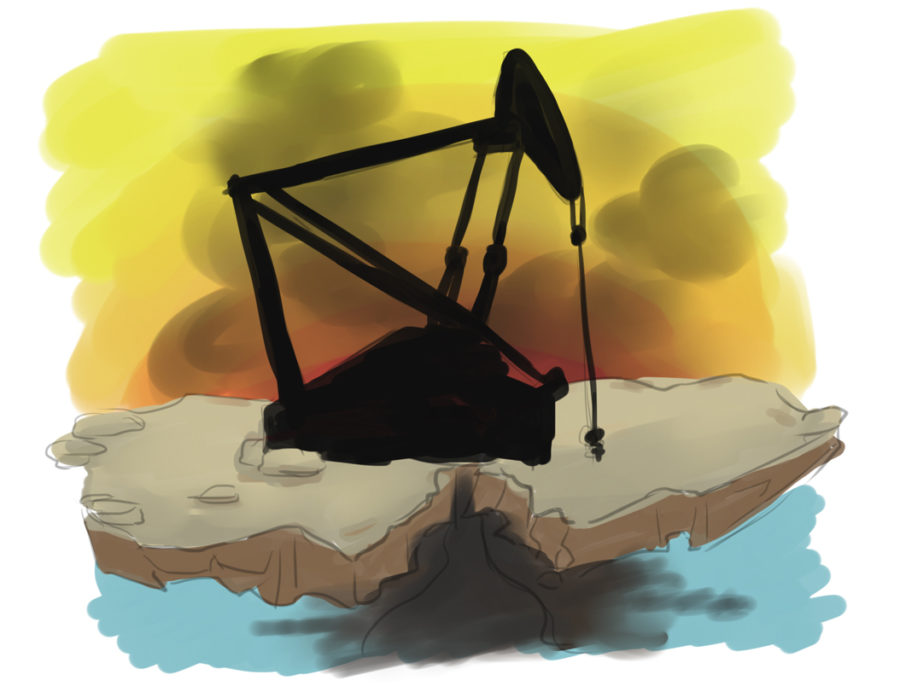About 50 miles north of Pittsburgh in Lawrence County, seismic detectors sensed a series of five small tremors last April.
While the quakes were too small to be felt by people, they were unusual for other reasons. The seismographic anomalies didn’t emanate from an area with natural faults, or cracks in the earth that widen over time. Rather, they happened right near a fracking well.
The state’s Department of Environmental Protection confirmed just last week that fracking activity was indeed what caused the tremors, making them the first fracking-related quakes recorded in Pennsylvania – the country’s second largest natural gas producer after a boom in 2012. The quakes didn’t cause any damage, but they are an ominous sign of the environmental dangers of fracking.
Fracking, or hydraulic fracturing, is so named because the process involves injecting liquid at high pressure into the bedrock, creating cracks where natural gas can escape. From there, the gas is extracted and processed in refineries.
Drilling for the gas, however, is not the cause of the quakes. Bill Ellsworth, a senior geophysicist with the U.S. Geological Survey, told environmental news source E&E News that, “we don’t see any connection between fracking and earthquakes of any concern to society.”
The real cause of tiny tremors is the disposal of wastewater deep underground. In addition to gas, fracking also produces plenty of toxic waste products. Wastewater disposal wells, where toxic water is injected thousands of feet in the ground so as not to contaminate drinking water, often operate longer and contribute to the injected fluid even more than fracking does.
“Earthquakes come from [engineers] disposing of waste water underground,” said Eric Beckman, a professor of petroleum engineering at Pitt. Deep-ground injections can open up previously inactive fault lines. As these old cracks are forced open by machinery, they trigger earthquakes.
We’ve seen these underground rumbles beyond Pennsylvania state lines. Oklahoma, a state that has seen heavy fracking since 1949, has been hit particularly hard by fracking-related quakes. The Sooner state experienced 890 earthquakes above magnitude 3.0 in 2015 alone, including a magnitude 5.8 quake last September.
Joe and Mary Reneau, of Prague, Oklahoma, saw their home nearly decimated by an earthquake caused by wastewater disposal sites nearby. The incident inspired a study in the area that concluded water injection was most likely at fault — no pun intended.
When the couple spoke to a reporter from Mother Jones about the incident in 2013, two years after their chimney had fallen through their roof, they were still living in fear.
“We still feel tremors weekly,” said Reneau. “They rattle our windows.”
The number of earthquakes in the state has increased dramatically since 2008. And while quakes are a natural phenomenon and the link between wastewater wells and tremors is still in need of research, state and federal regulations in Oklahoma shut down 50 wells in the state in 2016.
Concern over these quakes — or the effects of fracking on nature — isn’t new. Fracking practices have stoked the fears of environmentalists for decades. Researchers at the EPA released a report in 1987 highlighting concerns about groundwater contamination resulting from fracking.
And those worries were not unfounded. EPA scientist Dominic DiGiulio proved in 2013 that fracking waste contaminated the groundwater in Pavillion, Wyoming, rendering the well water in the town undrinkable. Wastewater disposal was, again, the cause of the problem. DiGiulio determined that open air frack pits — essentially unlined, uncovered holes in the ground where fracking wastes are disposed — allowed dangerous chemicals to leach into the soil and run off into local streams when it rained.
In Pennsylvania alone, the DEP has reported 284 cases of contaminated water due to oil and gas activity.
Furthermore, fracking has used 250 billion gallons of water since 2005 alone. Throughout the Southwest, where drought has ravaged local aquifers, farmers often find themselves fighting the gas industry for water. The gas industry giants, more often than not, have the money to win those battles. Farmers in drought-stricken Carlsbad, New Mexico, found their wells bone-dry in 2013 due to demand from fracking wells.
Despite the grave environmental concerns fracking poses, there is a reason for its popularity: natural gas is an excellent fuel source, especially when compared to other non-renewables. It is less expensive and more easily stored than other fossil fuels, such as oil or coal, and it burns relatively cleaner than both — making it an attractive option for a transitional fuel as the world slowly moves toward renewable sources, including solar and wind.
Fracking wells already have measures in place to prevent damage to the surrounding ecosystem, but that clearly hasn’t been enough.
“In general, no process is perfect, but folks could do a lot better than they do now with respect to gas and waste leaks,” said Beckman, pointing to the need for more regulations to minimize environmental hazards.
Unfortunately, corporations have the lobbyists and resources to squash most attempts at regulation.
The time and resources required to properly regulate fracking, spent investing in and building up our renewable options, would yield far greater results. The reasons natural gas is better than coal or oil, apart from price, also hold true for solar and wind.
More research and development will help bring the price of renewable energy down, as well as create thousands of new jobs in this new energy sector — good news for Donald Trump supporters too. For a rust belt state like Pennsylvania, which saw many lost jobs with the decline of coal, green energy jobs could breathe new economic life into our struggling countryside.
If the alternative is patching up a flawed drilling system that poisons our water, thickens our air and rumbles our earth, let’s ditch gas and just go green already.
Nick primarily writes on politics and American culture for The Pitt News.
Write to Nick at [email protected].



